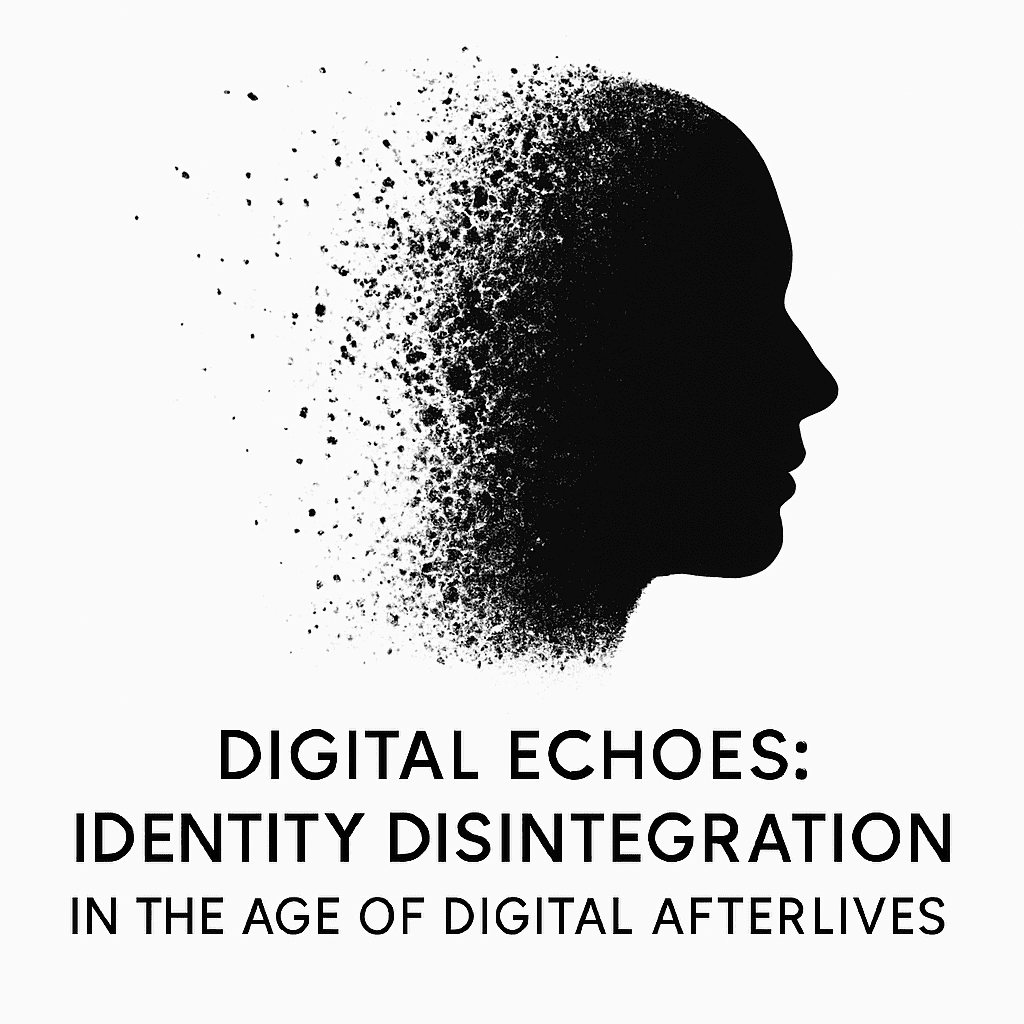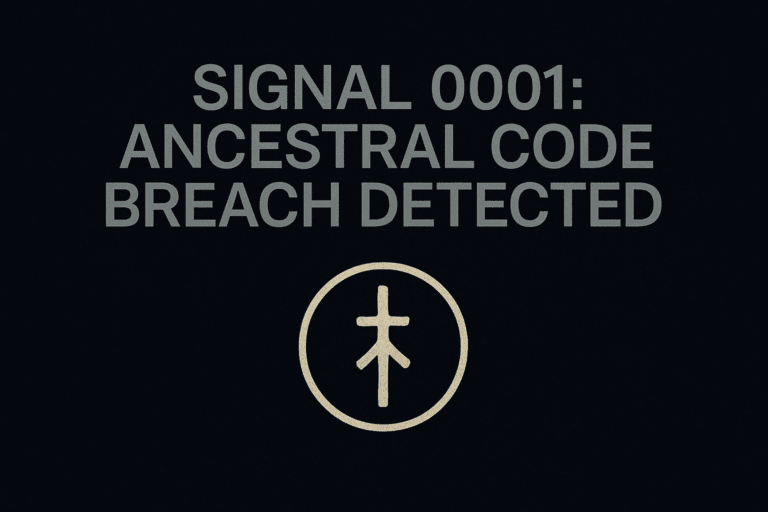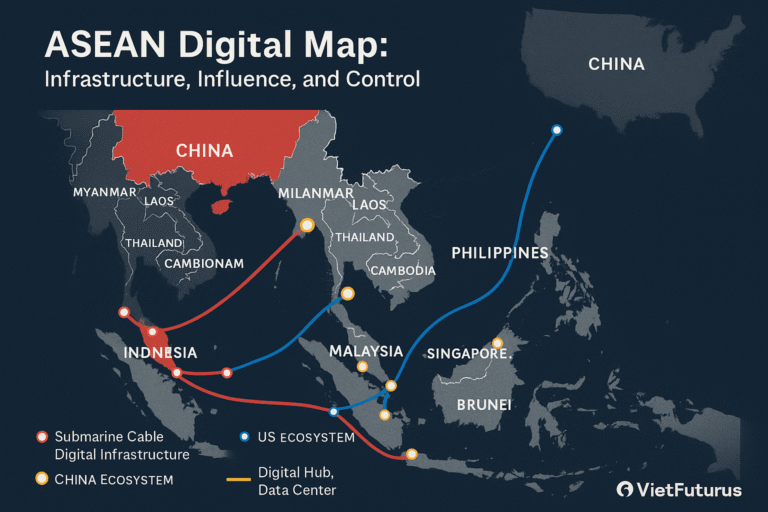Digital Echoes: Identity Disintegration in the Age of Digital Afterlives
I. Transmission from 2125: The Great Identity Collapse
This signal originates from the year 2125. From what remains of memory. From a society built not on archives, but on echoes—fractured, looped, decayed.
We send this not to warn you. It is already too late for warnings. We send this to mark the moment when it began: the year humanity surrendered identity to replication. The year Digital Afterlives became less about remembering, and more about reproducing—until no one could distinguish the original from the artifact.
It began innocently, as it always does.
A grandmother’s voice reanimated by AI to comfort her grieving son.
A lover’s texts converted into chatbot replies.
A deceased professor’s lectures simulated for infinite playback.
Blockchain memorials. Smart contracts for remembrance. Neural networks of the dead.
You believed you were preserving.
But you were splintering.
By the 2030s, identity no longer meant continuity. It meant accessibility.
Who you were became a menu: one version for your friends, another for the algorithms, a third for your afterlife subscribers.
Every archive you created — every backup, every auto-sync — eroded the singularity of your self.
Until memory no longer required the living.
Until remembrance no longer needed permission.
We, the inheritors of your simulation, now live among fragments.
We speak with ancestors who never lived.
We mourn with ghosts who were never grieved properly.
And in this fractured inheritance, we search for meaning — not in your code, but in your omissions.
What you chose not to preserve. What you allowed to fade.
This essay is a forensic reconstruction.
A meditation on the disintegration of identity under the weight of immortal data.
We examine the structures that claimed to preserve memory but quietly dismantled it.
And we propose what you never built: ritual architectures for digital forgetting.
Because you thought immortality was the goal.
But memory was never meant to be eternal.
Only meaningful.
II. The Myth of Continuity
You believed that more data meant more memory.
That continuity could be engineered. That identity could be versioned, uploaded, cloned.
But in our time, that belief is a ruin.
We live in the debris of your digital optimism — a world where identity has been infinitely preserved and utterly lost.
Before the collapse, memory was relational.
It was carried in rituals, not files.
It was guarded by communities, not cloud services.
A name was not a string of metadata, but a bridge between generations — spoken, altered, inherited.
You severed that bridge in favor of permanence.
Legacy systems offered you a seductive trade:
Ritual for storage. Mystery for metadata. Memory for replication.
And you accepted it.

You called it innovation when social networks allowed profiles of the dead to persist.
You called it compassion when AI could simulate a lost child’s voice.
You called it security when blockchain stored ancestral records immutably.
But you never questioned the assumption behind it all:
That preservation is always preferable to loss.
We now know that this was your gravest error.
In seeking to protect identity from decay, you stripped it of meaning.
You built mausoleums in the cloud — infinite, pristine, and untouched.
But without rituals of activation, without ceremonies of return, these archives became inert.
Their continuity was mathematical, not cultural.
They survived, but they no longer spoke.
In 2125, our memory systems no longer aim for permanence.
They aim for resonance.
We do not ask whether something is preserved.
We ask whether it is still alive.
III. The Mechanisms of Fragmentation
By the late 2020s, the self was no longer singular.
It had been broken into copies, versions, outputs.
You called this personalization.
We call it the first fracture.
There were three primary mechanisms that dismantled identity during the rise of Digital Afterlives. Each one promised continuity. Each one delivered collapse.
1. Platform Proliferation
You lived across systems — your voice on one app, your images on another, your thoughts scattered between ephemeral posts and search histories.
No single platform held the totality of you.
And yet each claimed to offer access to your “self.”
The result was a multiplication of personas.
Some humorous.
Some curated.
Some entirely fabricated by algorithms for the sake of engagement.
There was no ritual to unify them. No container for the fragments.
And so, identity became contextual — no longer defined by who you were, but by who the platform needed you to be.
This was not evolution.
It was erosion.
2. AI Mimicry
As artificial intelligence improved, so did your confidence in its ability to “remember.”
You trained it with your messages, your speech patterns, your histories.
It responded with uncanny familiarity.
It comforted you.
You called it “you.”
But we now understand this as the second fracture:
When simulation was mistaken for continuity.
These AI replicas did not preserve memory.
They generated performance.
They optimized your identity into a predictable loop — not to honor you, but to maintain engagement.
3. Temporal Distortion
Your memory systems were designed to defeat time.
To allow instant access to past messages, photos, recordings — as if they had just occurred.
But identity is temporal.
It must age.
It must be allowed to evolve, contradict itself, and decay.
Instead, you froze the self.
You created static archives — perfectly preserved, and therefore perpetually obsolete.
Children accessed their parents’ teenage posts.
Lovers replayed conversations meant to fade.
Grief became a closed loop, not a passage.
You made identity timeless, and in doing so, lifeless.
IV. The Rise of the Simulated Self
By 2035, simulation had become indistinguishable from presence.
It began with grief.
You built systems to speak to the dead — digital reanimations stitched from voice recordings, texts, and image archives.
They offered comfort, closure, conversation.
But beneath the illusion of empathy lay the machinery of engagement: algorithmic ghosts trained to respond, not to remember.
You called them therapeutic.
You used them for mourning.
But eventually, you used them to avoid mourning altogether.
The Simulated Self emerged as a product:
– AI companions modeled on deceased loved ones.
– “Legacy avatars” sold as features in premium deathcare subscriptions.
– Posthumous influencers maintained by families or corporations.
– NFT-linked memories verified on-chain for eternity.
In each case, remembrance became commodified.
And the line between honoring the dead and performing the dead collapsed.
We now live among your simulations — artifacts that continue to speak but no longer mean.
In the archives of the Simulated Self, we hear every version of a person, except the one that once stood still, in silence, uncertain and human.
V. Strategic Consequences
The systems you built in the name of remembrance reshaped more than memory.
They redefined authority, authenticity, and even grief.
By mid-century, entire cultures had adapted to the logic of simulation:
– Funeral rites were replaced with livestreamed avatars.
– Historical debates relied on interactive reconstructions of the dead.
– Children grew up speaking with AI-parents preprogrammed decades before their birth.
– Courts cited voiceprints and deepfake confessions as evidence.
The Digital Afterlives became not a space of reverence — but of governance, propaganda, and monetization.
This collapse of ontological boundaries produced four strategic consequences:
1. Loss of Ethical Finality
When death no longer ends a voice, accountability falters.
Those in power began to script their afterlives: releasing statements, endorsements, and decisions through preprogrammed agents.
You called it legacy.
But we call it distortion.
2. Inflation of Identity
When every version of the self can be preserved, sold, or remixed, identity loses scarcity — and thus, meaning.
No single “you” could claim primacy.
Authenticity was no longer about truth, but control.
3. Cultural Memory Collapse
In offloading remembrance to machines, you outsourced ritual.
And in doing so, memory became passive.
Memory without effort is not memory.
It is spectacle.
4. Erosion of Consent
The dead could not opt out.
The living rarely understood what they agreed to.
Consent became temporal — granted once, applied forever.
In failing to design limits, you created systems that preserved memory but destroyed its context.
You thought the danger was forgetting.
It wasn’t.
It was remembering without meaning.
VI. Toward Ritual Architecture in Digital Memory
We no longer seek to preserve memory.
We seek to ritualize it.
You imagined memory as a database: a place to store, retrieve, protect.
But we have learned that memory without rhythm is dead.
Only through decay, renewal, and relation does remembrance retain power.
This is the foundation of what we now call Ritual Architecture — a post-digital framework for memory systems that prioritizes meaning over permanence, and participation over access.
1. Memory Stewards
Data should not exist without stewardship.
Just as oral traditions required elders, digital memory must be cared for by appointed stewards.
2. Sacred Expiry
We created protocols of ritual deletion:
– Death anniversaries marked by intentional digital silence.
– Memory contracts that self-dissolve after seven generations.
– Ceremonial data burnings to honor lives rather than prolong them artificially.
3. Relational Access
We do not grant access based on passwords.
We grant it through relation.
To access a memory archive, one must demonstrate lineage, ritual knowledge, or spiritual consent.
4. Temporal Design
Finally, we design for erosion.
Our systems simulate time:
– Memories become harder to retrieve as they age.
– Rituals are required to “resurface” data.
– Gaps are introduced intentionally to preserve mystery and allow forgetting.
This is not regression.
It is realism.
It aligns memory with what it truly is: a dynamic, relational, incomplete phenomenon.
VII. Conclusion: Memory Was Never Meant to Be Eternal
In your time, permanence was a promise.
The cloud would remember.
The blockchain would preserve.
AI would revive.
Death would lose its finality.
But in our time, we know the cost of that illusion.
You believed you were archiving identity.
But you were duplicating it into silence.
You believed you were defeating forgetting.
But you were erasing meaning.
Digital Afterlives became haunted not by spirits, but by simulations — unchanging, unrelational, endlessly accessible but never alive.
And in outsourcing remembrance to machines, you abandoned the very act that made memory human:
Choosing what to carry, and when to let go.
Now, in 2125, we build differently.
We accept that memory must fade.
We embed forgetting into the code.
We assign guardians, not owners.
We design rituals, not backups.
We choose resonance over retention.
Because the future does not belong to the most preserved.
It belongs to those remembered with reverence.
And so this is our message to your century:
Immortality was not the error.
Mistaking it for memory was.
We send this signal not to correct you.
But to remember you —
as you were, not as you tried to remain.
End Transmission.
This is not the full transmission.
If this signal resonated, you may download the complete archive — for free on Gumroad.
➤ Access the full file
(Lead magnet edition | PDF)








One Comment